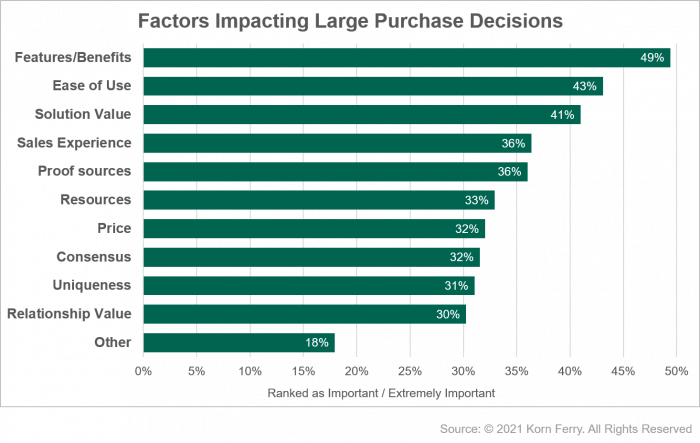“Relationship Selling” is a term that has been bandied about for decades and means, as is so often the case with sales terms, different things to different people. It also has meant different things at different periods. Many things about this have remained the same while others have been—and are—changing.
Over the years, I have been a huge proponent and practitioner of relationship selling. Win/Win is the cornerstone of this approach and recognizing you/your company are not for everyone is the cornerstone of Win/Win. This was true 50 years ago and remains true today.
Boozin’, cruisin’, and schmoozin’ was a catchphrase that cynically described relationship selling in the ’80s. Yes, loads of lunches, drinks, and outings were part of the regimen. This is much less the case today. Sure, companies still host outings and sponsor events, but between ethics concerns and, now, Covid concerns, this approach has been vastly reduced. But connecting with people still matters.
Relationships Declining in Value to Buyer
In last month’s blog, I wrote about the need for trust and the importance of consistency. Being a constant—as opposed to a variable—is another condition in relationship selling. Whether you call it “being there” for someone, having their back, or simply being available, establishing that you’re a reliable participant helps elevate your level of relationship.
In this video, we describe five levels of relationship: Approved Vendor (lowest); Preferred Supplier; Solutions Consultant; Strategic Contributor; Trusted Partner/Advisor. As you move up through levels, some things increase (e.g., trust, access, domain expertise). And, as you move up, some things decrease (e.g., competitive bake-offs, price sensitivity, cycle time). All good things. This is Sales Mastery’s definition of selling: Establishing and elevating relationships over time.
However, our recent research shows that as important as relationships have been, they are going down in perceived value. In fact, in our 2021 Buyer Preferences study (conducted with Korn Ferry), relationships are at the bottom of important purchase factor considerations (see chart).

What’s going on? Have relationships really fallen to last place in today’s high-speed, remotely working, Internet-connected world? As every consultant likes to say, “It depends.”
What Buyers Really Want
Below, we see the levels of relationship as a pyramid and have turned it 90 degrees to show what sellers do at each level.

If all you’re bringing to the table is information about your company’s products/services, in all likelihood, you’ll be well down the list of impacting factors. On the other hand, if you’re bringing domain expertise, experiences of other clients implementing your solutions, and insights about your own and the buyer’s organization, then you’ll be having a much greater impact.
Resources That Buyers Trust
Why?
Again, let’s turn to the data. From the same Buyer’s Study, we see the resources buyers turn to when making a purchasing decision.

First and foremost, is the buyer’s own experience with a vendor and their solutions. However, if this is new to the buyer, the second place they turn is to subject matter experts (SMEs). If you’re pitching your product, you’ll be relegated to the lowest levels; but, if you’re seen as an SME, you’ll be well placed to help discuss the buyer’s business problems, explore possible solutions including your own, while at the same time–increasing the value of your relationship.
This is what relationship selling can and does mean today. This isn’t new but it has taken on new relevance/applicability given the decline of traditional “relationship selling.”
Of course, with the constraints imposed by Covid, as well as changes in meeting buyers that are likely to remain after the pandemic, demonstrating industry and organizational understanding becomes a challenge. The shift away from the 2 martini lunches of days gone by, to today’s high-speed, Internet-connected world presents a new opportunity: social selling.
Before you can have a relationship with buyers/customers, you need to engage them. Customer engagement more accurately describes the earliest part of today’s relationship selling. It’s not about selling to customers or social marketing. It’s more about getting the word out and being consistent in how and when you do it.
Think of it this way: During World War II, armies used searchlights that scanned the sky until they came upon an enemy plane. Then they would lock in on the plane and shoot it down. That’s what a lot of marketing has been about. You’re randomly looking for a target and, when you find it, you lock in on it until you’ve killed it (such an unfortunate and fitting analogy).
A lighthouse may be a better metaphor for customer engagement today. Lighthouses also send out beams of light, but in a very different and intentional way; and that’s what we should do. We want to beam out a message that explains who we are, what we do, what we have, and how it can help potential customers. That’s what social engagement is all about.

Being a lighthouse allows customers not only to find you and your message, but to navigate to you, or to find their own way. Either is good, both are useful. Let’s worry less about seeking random targets and focus more on having a message of value, that we share and consistently send out.
Conclusion
The more things change, the more they stay the same. Yes, buyers are changing buying habits and leveraging new tools as they do so. Gatekeepers of the past have been even further bolstered, or replaced, by a flood of information on the Internet and tools to further screen and protect decision-makers.
This is not a call to arms, to somehow circumvent or overwhelm the defenses buyers are erecting. That never was and still isn’t the way to establish and elevate relationships. Rather, this is a time to be clear on your purpose (your company’s WHY, to quote Simon Sinek), to develop and increase your customer, industry, and domain knowledge, and to be clear and consistent in messaging this out and inviting your prospects in.




Excellent article Barry. The lighthouse analogy is on target. Also really like your video on the “five levels of relationship”. I have seen and quoted a previous version but appreciate the refresher. Whatever your starting point, moving up the buying food chain is always a worthwhile objective.